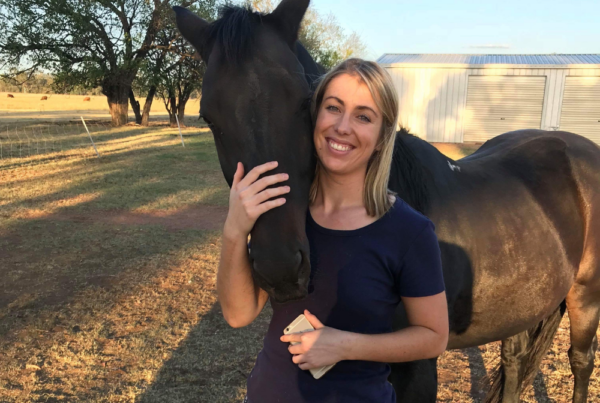
By Wendy Cohen
There are a few truths about living in the country versus the city. On the upside, the air is fresher. There is no peak hour traffic. Your neighbours talk to you. You can get a park outside the bank, every time.
On the downside, petrol is more expensive. The internet and mobile phone services can be so frustrating you feel the urge to fling devices out the window daily. And, if you want to access the full range of education options after high school, chances are you have to leave home.
Just a few decades ago, moving out of home to study, train or take up a new job, was a normal rite of passage for all school leavers, both in the city and the country.
However, in 2018 things have changed. Faced with prohibitive costs of accommodation and more relaxed expectations about what it means to be independent, young people in our cities are choosing to stay in the family home for longer and putting off the financial and emotional burdens of moving out, sometimes until their 30s.
But many students in rural and regional Australia don’t have the same options. Because of where they live, participating in post-school education and training is more challenging than ever.
A worrying picture is emerging from recent studies about the challenges regional, rural and remote (RRR) students face:
- They go to university less – there’s a 7% gap1 in university participation between city and country kids, meaning tens of thousands of young people are missing out.
- The burden of low expectations – overall, RRR parents are 12.3% less likely to think their children will go on to higher education, even when educational and socio-economic status are taken into account2. Even in regional areas, students are 10% less likely to aspire to attend university3.
- Lower school completion rates – country students are 7% less likely to complete high school than students in the city3. For remote kids the situation is even worse: successful completion of Year 12 drops from 78% in major cities to 43% in very remote areas4.
- Fewer options – students in major cities will have at least two or three TAFE institutes or universities within an easy commute from home. Students in the country, however, are lucky to have even one close by. And with poor internet speeds and connections, studying online is often no alternative.
- Shrinking opportunities in TAFE and apprenticeships – with nearly one third of RRR students undertaking an apprenticeship or enrolling in further training at TAFE, country kids are disproportionately affected by structural and funding challenges facing the sector. Insecure funding means fewer courses offered, reducing their attractiveness to school leavers5.
On top of it all, drought is biting in many parts of the country, making further education for financially stretched rural and regional families that much more difficult.
All these factors mean equity in higher education is becoming a pipedream. Without interventions and changes in policy settings, we risk entrenching a two-tier education system.
But there is some good news, which comes in a recent report into regional, rural and remote education. Authored by Emeritus Professor Dr John Halsey and coming out of the Independent Review into Regional, Rural and Remote Education (IRRRRE), it shines a light on the challenges facing all of us when it comes to ensuring country students are not left behind. It also focusses on some key areas that deserve extra attention from the entire sector, NGOs and government, and makes 11 separate recommendations around how we can work together to achieve equity and strong outcomes for the country.
Several of the focus areas and the subsequent recommendations align with the work of the Country Education Foundation and our partners. We support young people in the vital transition phase from high school to tertiary education, training and jobs – the fourth key focus area of the report.
“RRR students at or near the stage of making the transition from schools to employment, training, further study or combinations of them, are often confronted with issues and costs which their counterparts in urban areas do not have to worry about.” (from the IRRRRE report, page 7 PDF version)
We are also very active in working nationally and collaboratively, which is the first key focus area. While CEF does not receive government funding, we work alongside our valued partners including Origin Foundation and with various universities to support country students and their communities via our network of volunteers across 43 regions of Australia.
It’s pleasing to note that CEF’s work, directly or indirectly, supports many of the 11 recommendations coming out of the report – particularly support of students during the transition phase out of school, a national focus for RRR education and the need for the philanthropic sector to play a greater role in raising achievements and improving opportunities for RRR students. From this we know that by working together we stand a good chance of overcoming many of the challenges facing young people in the country. But, as Prof Halsey says in his report, “it is now time to step up the pace” as we move to make his recommendations a reality.
“Education and training plays a critical role in building the social fabric of communities, but also in developing social capital for economic prosperity.” (from the IRRRRE report, Part 3, page 81 PDF version)
On 30 May, the Minister for Education and Training, Senator Simon Birmingham, released his response to Professor Halsey’s report. It’s all positive, as you’d expect, and we very much welcome the government’s recognition of how inequity in education impacts rural and regional communities. The next step is for the government to act on the findings and work with us to implement and deliver change. This is a once in a generation opportunity. Let’s make sure that, in the not-too distant future, a student’s postcode no longer limits their opportunities or aspirations.
Acknowledgements
1. Simon Birmingham in 2017 – Minister for Education and Training
2. Koshy et al. Parental Expectations for young people’s participation in higher education in Australia, Studies in Education, 2017
3. Cardack et al. National Centre for Student Equity in Higher Education. Regional Student Participation and Migration: Analysis of factors influencing regional student participation and internal migration in Australian Higher Education, 2017
4. Emeritus Prof. John Halsey – IRRRRE Report, 2018. Page 12 PDF version
5. Mitchell Institute Education opportunity in Australia, 2015
This blog first appeared on the Origin Foundation’s website. For more information about what they do and who they help go to there website.
Related media:
Federal review supports CEF’s vision for rural and regional students





Recent Comments